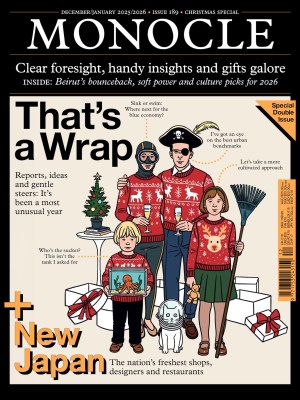Issues
Italy’s quiet stability and confidence puts it steps ahead of chaotic France
Set the gastronomic rivalry aside and let’s ask a big question: is Italy really the new France? Comparisons between the two cultural big hitters have become unavoidable this year. Both know how to live and eat well and attract vast numbers of tourists. That said, France has foundered economically and politically, while Italy – the home of fiscal blunders and political gaffes – has looked surprisingly stable in comparison.
If proof were needed of the two countries’ fortunes moving in different directions, it came in September when global ratings company Fitch upgraded Italy to BBB+ status, while downgrading France from AA- rating to an A+ (Moody’s gave the country a could-do-better negative outlook in October). The humiliating Louvre robbery a month later seemed like a kick in the crown jewels. That’s before we mull over the jailing of former president Nicolas Sarkozy.
So is Italy really the new France? Not quite. Financial institutions love extreme prudence and that’s precisely what Italy has been pedalling under its far-right prime minister, Giorgia Meloni. Spending has been reined in but little has been done to stimulate growth or investment. Public debt is still higher in Italy (135 per cent of nominal GDP) than in France (113 per cent) but the latter is catching up. While Meloni’s retrograde social policies have managed to avoid too much global scrutiny, you have to take your hat off to her for keeping together a ruling coalition in a country that doesn’t normally do political compromise.
Beyond politics, Italy has been either cheeky or canny – depending on how you look at it – in stimulating its economy by tempting the wealthy to transfer their fiscal residency here. France’s then prime minister, François Bayrou, even accused it of “fiscal dumping”, in a reference to an Italian flat tax on foreign income and other favourable conditions that have caused an exodus from France, the UK and elsewhere.
Italy has problems that aren’t going away, though, from an ageing population and a Eurozone debt mountain to stagnating wages. But it’s having a good old gloat about arguably being the most stable western European power. Meloni has championed herself as a bridge between Europe and the US, and even Africa. The longer she keeps the government together, the more plausible this will start to sound.
Ed Stocker is Monocle’s Milan-based Europe editor at large.
How Moniepoint opened the door to digital banking for Nigerian citizens
In Africa’s fast‑evolving fintech landscape, few stories embody ambition and resilience like that of Moniepoint. Formerly known as TeamApt, the Nigerian start‑up has, in less than a decade, morphed from a modest provider of banking software into one of the continent’s most powerful platforms.
In October it announced that it had raised a further $90m (€77m) in funding, bringing its total war chest to more than $200m (€172m). The most recent injection includes cash from Google’s Africa Investment Fund and Visa; the calibre of backers signals not only investor confidence but also recognition of Africa’s growing influence in the global digital economy.
Founded in 2015 by Tosin Eniolorunda and Felix Ike, Moniepoint began as a small operation providing software to Nigerian banks. The founders soon realised that there was a deeper problem: millions of Nigerians remained locked out of the financial system, trapped in a hard‑to-monitor cash economy.

In response, they created a network of local agents who could deliver digital services to people overlooked by conventional banks. From remote villages to city markets, Moniepoint’s blue‑and‑white point‑of‑sale terminals became emblems of accessibility. Today the company serves more than 10 million personal and business customers and processes more than $250bn (€215bn) in transactions annually.
The firm’s reputation was cemented during Nigeria’s 2023 cash crisis, when policy shifts and currency shortages brought the formal banking system to its knees. While ATMs went dark and queues snaked around banks, Moniepoint’s agents kept cash flowing and digital transactions alive.
As Moniepoint scales, can it balance rapid growth with its founding mission of accessibility? Its trajectory – joining other Nigerian “unicorns” valued at more than $1bn (€860m), such as Interswitch and Andela – certainly suggests so.
moniepoint.com
Comment:
Cryptocurrencies hog the headlines but it’s important to remember that much of the world still needs a reliable retail banking system.
How Toronto is leading the way in the sustainable regeneration of industrial waterfronts
The regeneration of Toronto’s former industrial harbour is a lesson in sustainable development that many portside cities can learn from. Following decades of planning, the waterfront is in the midst of a major renovation. Jutting into Lake Ontario on the east side of the city, a bleak, 240‑hectare area that was previously home to refineries, coal facilities and shipping infrastructure will soon feature a park, an art trail and modern, affordable housing for 15,000 people.

At the centre of this project is the “renaturalisation” of the Don Valley River, the mouth of which was given an unnatural 90‑degree bend in the late 19th and early 20th centuries to accommodate an industrial port district. This intervention created a risk of catastrophic flooding during major storms until a bid for Toronto to host the 2008 Summer Olympics finally nudged authorities from all levels of government to form a plan to make it accessible and liveable for Torontonians.
“The project doesn’t just unlock the land, it reimagines this whole quadrant too,” says Chris Glaisek, Waterfront Toronto’s chief planning and design officer, who has been working on it for two decades. The first phase was unveiled in July 2025 with the opening of Biidaasige Park, named in the local Indigenous language.
The park is dissected by the new river mouth, which was extended by more than 1km using cranes and cleaned on‑site soil, and allowed to snake naturally. Kayakers paddle in the now‑clean water, while families walk along the shore path. The Lassonde Art Trail is a big draw for visitors, featuring open‑air contemporary pieces embedded into the park. The only theme connecting them is the artist’s inspiration from the landscape.
As the surrounding wetlands slowly regenerate, design work is under way for the nearby community and housing development, with the first residents expected by 2031; it is named Ookwemin Minising, after the cherry trees that once grew here. “We have changed our relationship to the Don River and the city,” says Glaisek. “I hope that this will be a model for more positive development in Toronto.” Other cities that are struggling with housing issues should also take note and make more of their overlooked industrial port areas in 2026.
Comment:
From London and Los Angeles to Singapore and Sydney, port cities are struggling for space – and overlooked former industrial areas might hold the answer. Toronto’s waterfront offers a glimpse of how to do it responsibly, sustainably and in style.
Monocle’s guide to three must-try classic Paris bistros
1.
Le Square Trousseau
The neighbourhood favourite
In the 12th arrondissement, near Aligre market, Le Square Trousseau feels at once breezily modern but in ways pleasantly unchanged since its opening in 1907. There’s a belle époque elegance to the bevelled glass, marble mosaics and Thonet chairs, while the menu features classics such as escalope de veau à la crème, steak tartare and crêpes Suzette, plus twists such as the toothsome miso-sesame salmon.
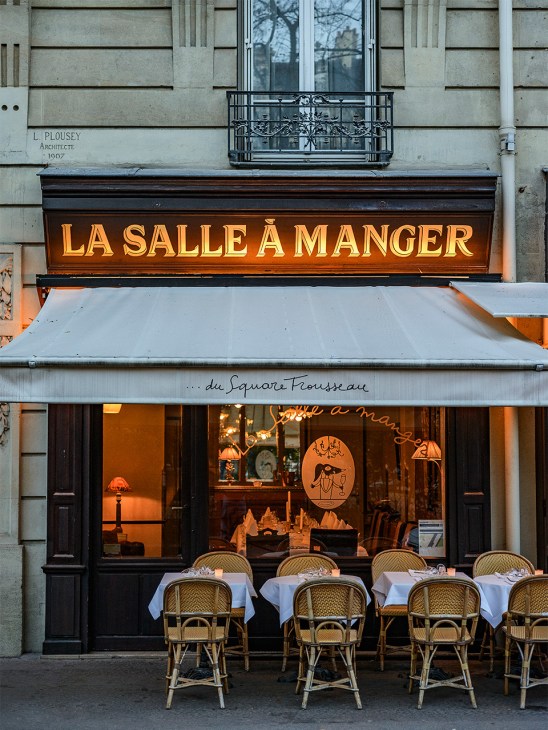

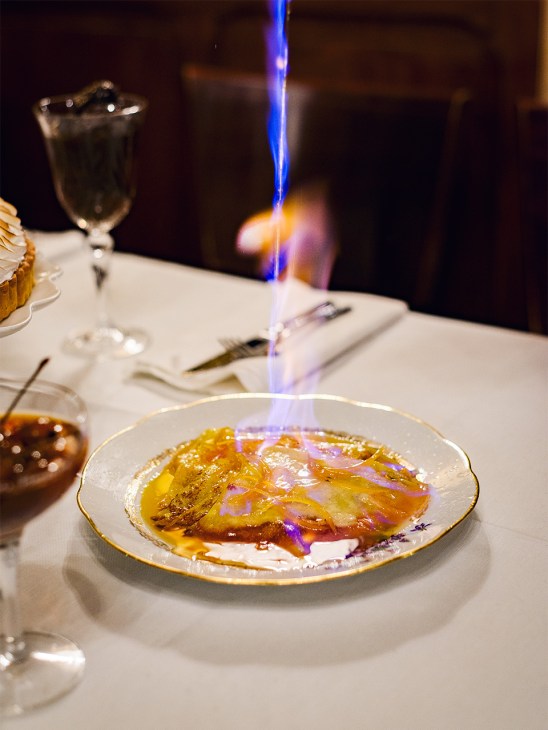

Overseen by Mickael and Laurence Jarno and chef Didier Coly, the restaurant’s reliability runs from the genial staff to the opening times: 08.00 to midnight every day. It’s also a place for all ages, where warmer days see children drawing in chalk (provided) on the pavement outside. The charming, hand-drawn pooch logo on the menu hints at a playful side that belies the effort that goes into the service here.
“I have now been in the kitchen for 40 years,” says Coly. “I started at age 16 as an apprentice in Corrèze and have been working with Le Square’s team for more than 15 years.” Coly’s recipe for success is simple. “It’s a very pretty, authentic bistro,” he says. “[We offer] homemade cuisine with a touch of modernity.”
1 Rue Antoine Vollon
Why it works
The mood at Le Square Trousseau changes with the seasons. In summer, the playground opposite rings with children’s laughter, while in winter, there is a retreat into the cosy interiors. It’s also different across the day, says chef Coly. “At lunchtime, the service is lively, attracting a loyal neighbourhood clientele,” he says. “In the evening, the atmosphere becomes cosy, with candles on every table.”
2.
Chez Georges
The cheerful host
A few steps from Place des Victoires, Chez Georges is the kind of bistro that reminds you why Paris will always be Paris. Run by the charming Jean-Gabriel de Bueil – a veteran of the city’s dining scene and a true guardian of bourgeois cuisine – this address is now his sole focus, and it shows.
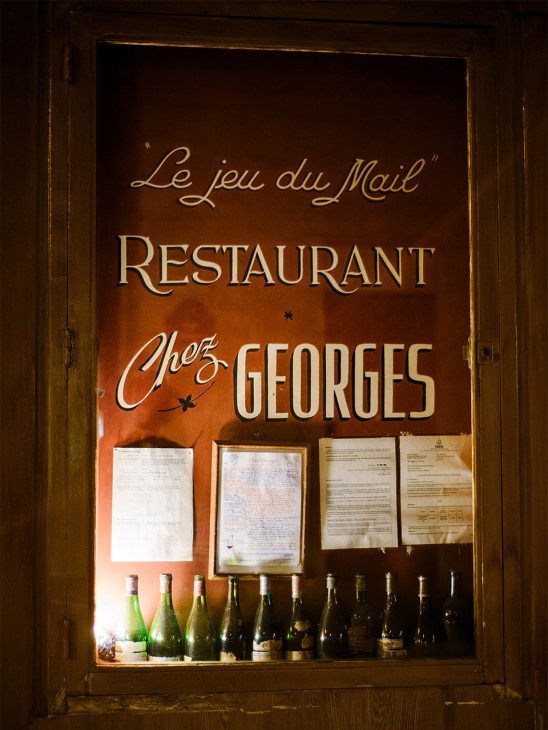
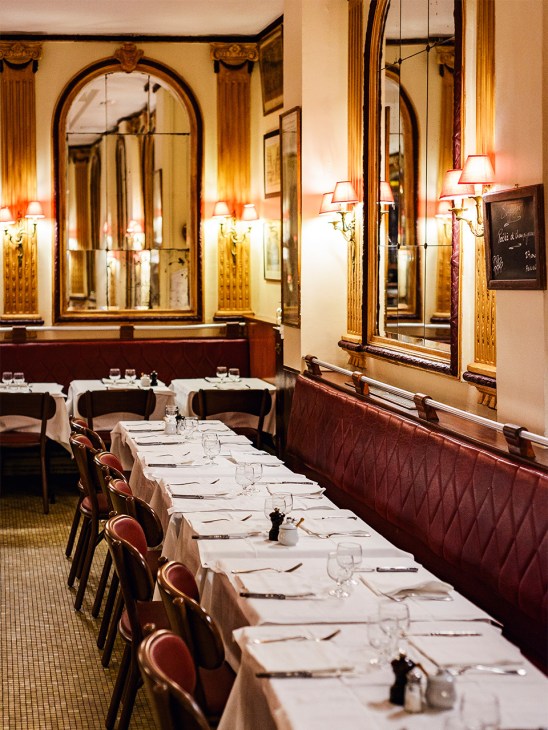

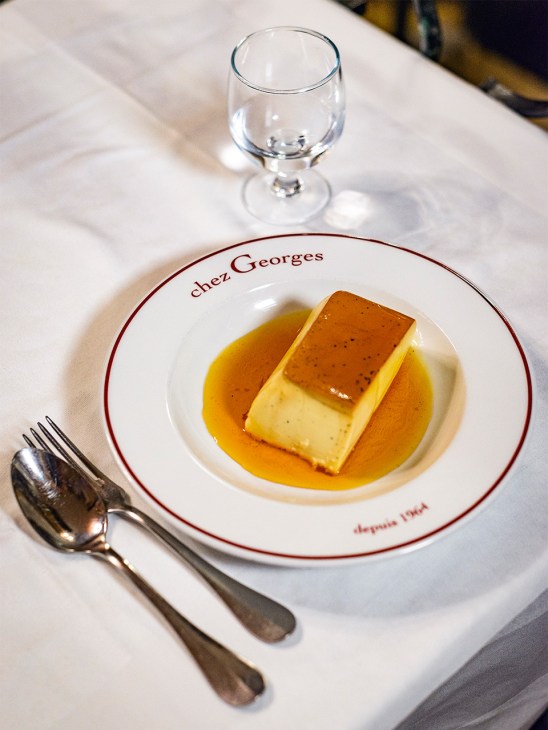
The tone is set by the violet-ink menu, leather banquettes, white tablecloths, a pewter bar and large mirrors. The menu celebrates the great tradition of French home cooking, albeit at a standard seldom achieved by amateur cooks. Expect goose rillettes, parsley ham, veal liver with bacon, grilled sole and the beloved pavé du mail – peppery steak with a cognac-laced cream, plus fries.
The puddings are pure nostalgia: vanilla millefeuille, tarte Tatin with thick cream, profiteroles dripping in warm chocolate and a proper rum baba (there are many pale comparisons in Paris). The wine list leans towards burgundy and beaujolais, including De Bueil’s own Chénas Rouge Caillou. Unpretentious, warm and joyfully noisy, Chez Georges is a bastion in a changing city. It’s a type of restaurant of which few remain but those that do remind you of what it means to be Parisian.
1 Rue du Mail
Why it works
Paris is all about personality and Jean-Gabriel de Bueil provides that in abundance. “For my part, the only thing I try to do – with all humility – is to take things seriously without taking myself too seriously,” he tells Monocle. “And to stay true and in tune with the place, its history, its neighbourhood, its guests and the team.”
3.
La Poule au Pot
The nostalgic one
“Everything is guided by sharing,” chef Jean-François Piège tells Monocle, while welcoming us in under the burgundy awning of his beloved bistro. “The dish is placed in the middle, and everyone helps themselves – and then goes back for more.” At La Poule au Pot, sharing plates aren’t a new thing, nor presented as such. Instead, it’s an idea as old as the restaurant, which dates from 1935 and sits in the neighbourhood of Les Halles, long known, thanks to its market, as the city’s “belly”.



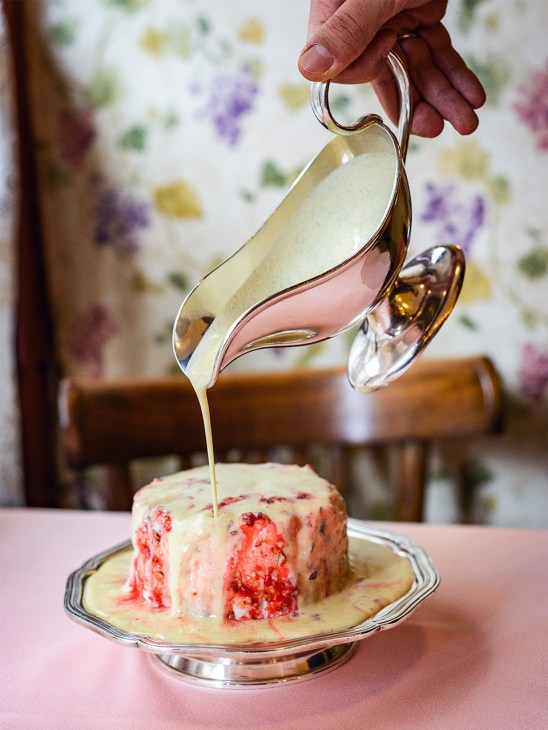
Piège took ownership of the restaurant with his wife, Élodie, in 2018 and the pair have sought to update rather than rewrite the rules of a remarkable institution that’s had only three owners in more than 90 years of service. The decor, which includes a zinc counter, mosaic floors and even the original wallpaper – plus unmistakable pink tablecloths and a painstakingly sourced collection of about 2,500 pieces of silverware – is almost as delicious as the food.
“The luxury here doesn’t lie in the drapes or the materials but in the time that we take to cook well and to bring pleasure to those who sit at our table,” says Piège with palpable pride before our French onion soup is served. “I like to say that I didn’t choose La Poule au Pot – it chose me. Élodie and I immediately knew that it was the perfect stage to express my deep love for French cuisine.”
9 Rue Vauvilliers
Why it works
Paris’s culinary reputation precedes it but it can be surprisingly difficult to tell a well-preserved and excellent old bistro from an OK one (of which there are many). La Poule au Pot has survived the many comings and goings of the restaurant scene through its consistency, the hard work of the staff and that most precious of things: knowing when the recipe doesn’t need changing as much as when it does. Bravo Jean-François, bravo Élodie.
Three Parisian bistros have shared beautiful festive recipes for you to make at home. Tap here to read them all and start noting the ingredients.
Read next: Monocle’s full city guide to Paris
It’s time to raise soft boys and tough girls: Here’s how Iceland breaks down gender stereotypes
If you had to name a nation that’s home to a network of schools practising strict gender segregation, your answer would probably not be Iceland. The country, which has been ranked first in the World Economic Forum’s Global Gender Gap Index for 16 consecutive years, currently has a female president, prime minister, head bishop and chief of police. But it is also the birthplace of the Hjalli model, an education system that is attempting to break down gender stereotypes among preschoolers by teaching girls to be more “masculine” and boys to be more “feminine”.

Devised by progressive educator Margrét Pála Ólafsdóttir in 1989, Hjalli (“rock” in Icelandic) is based on the theory that children are stunted by being taught in mixed classrooms because social pressures cause them to gravitate towards behaviour commonly coded as either male or female. Today it is estimated that almost 10 per cent of nursery-age Icelandic children are being taught under these principles in 18 Hjalli preschools and primaries.
These schools encourage girls to take more risks, speak confidently and directly, and engage in manual forms of play such as stacking blocks. Boys are taught tenderness by playing with dolls, co-operation by painting each other’s nails and being in touch with their caring sides by, for example, giving each other gentle massages. Hjalli children play with gender-neutral toys and wear unisex uniforms, and are surrounded by bare walls and soft colours. This is all supposed to foster creativity and calm concentration. Ólafsdóttir believes that if you separate the sexes and encourage them to behave in ways that are stereotypically associated with the opposite gender, they will develop into more rounded adults, who will in turn forge a more egalitarian society.
Not everyone in Iceland is sold on using such radical, gender-focused methods on toddlers. Kristín Dýrfjörð, a professor at the University of Akureyri, has said that the curriculum at Hjalli schools has calcified. She has written that their regimented structure and stripped-back environments produce schools that are “clinical”, “without history” and as unyielding as the name “rock” would suggest. Researchers at the University of Iceland also found that while Hjalli educated children were more confident, there was little difference in their academic performance compared with other children. That might be why similar ideas, in vogue across the Nordics in the 1980s, fell out of favour.
The Hjalli approach might have more take-up in Iceland than elsewhere precisely because its citizens are already open to its goal – though the fact that most of the country’s schools are not segregated would suggest that such a model is not required to produce world-leading gender equality. Iceland has pioneered efforts requiring companies to report their gender pay gaps and imposed quotas for female representation on company boards of directors. Could it be that Hjalli is more of a consequence than a cause of this success? There has been a Hjalli outpost in Scotland for several years but it has yet to implement its strict gender segregation. If only Iceland’s constitution were as easily exportable.
Comment
While the rest of the world argues over defining gender, Iceland has achieved world-leading equality on terms that everyone understands.
Umekita Park – Osaka’s newest development proving greenery has a place and purpose in urban environments
The port city of Osaka isn’t known for its green spaces or envelope-pushing urbanism but Umekita Park is a lush exception. Occupying the site of a former freight terminal next to Umeda Station, the city’s last prime development area forms part of a scheme called Grand Green Osaka. The space includes residential and office towers, as well as retail, dining and cultural venues set around a new 45,000 sq m park.

When Monocle visits, the lawn is full of life. Friendly pooches bask in the sun, children splash through a fountain and a family celebration unfolds, complete with a portable stereo (at a socially responsible volume), snacks and even chu-hai cocktails. Nearby, a small crowd gathers around a mobile cart, where everything from folding chairs to skipping ropes and kendama toys can be borrowed free of charge. There are even magnifying glasses available for children (or curious adults) who want to inspect the native Osaka flora and fauna.
The cart, developed by Osaka studio Graf, sums up the considered approach to the park’s design, which extends from small-scale initiatives to projects in vast spaces. Another case in point is a Sanaa-designed pavilion, formed by undulating roofs that stretch 120 metres along the side of the park. A section of this serves as a sheltered event space for concerts and performances.
Across the street is the VS exhibition space, designed by Tadao Ando – part of Umekita Forest, the next phase of the project, scheduled for completion in 2027. These projects might be led by award-winning creators but, thanks to the thoughtful work of Seattle-based firm GGN, there’s a sense that the architecture – like the walkways, furniture and planting – has been seeded into the landscape.
In the surrounding development, park-goers can peruse the wares of fashion labels and sport brands, choose between casual dining and high-end tables or even unwind in an open-air onsen. Yet, in a bustling city in which both space and nature are at a premium, the real appeal comes less from the clever buildings and more from the green spaces and Umekita Park itself.
Comment
In urban environments that aren’t famed for their abundant spots of nature, it’s particularly important to make the most of what there is. That might involve providing fun amenities for a park’s users – but any well-considered patch of greenery will be appreciated by residents. Give them space to make it their own.
Why I’m betting on Bangkok for the future of contemporary art
Bangkok isn’t getting a Sotheby’s or a Christie’s any time soon but perhaps that’s its strength. For anyone who is fed up with the art world’s obsession with sales, auctions and the cavalcade of confusingly named fairs, Bangkok could be a good base for the year to come.
While Thailand’s relatively high customs duties make it tricky to trade artworks, this lack of pressure and international institutions has freed up curators, gallerists and talented artists to pursue their work in their own ways. And a spate of independent new openings tells its own compelling story.
DIB Bangkok, a private museum of the late business magnate and musician Petch Osathanugrah’s stellar collection, opens in December. Many top global art institutions are flying in for a visit and it’ll now take you at least three busy days to get a sense of what’s going on in Thailand, rather than an overnight stay.
“Here, everyone and everything has an experimental spirit,” says Gridthiya Gaweewong, the director of the Jim Thompson Art Center and founder of Project 304, an independent art organisation. “Bangkok has become an exciting place for the arts community not only in Southeast Asia but around the world.” Gaweewong compares today’s buzz to that of the 1990s, when a wave of Thais returned from abroad to set up art spaces – only this time the happenings are far better funded and more visible.
Along with its satellite space on Soi Sukhumvit 26, the main DIB building, which was designed by Los Angeles based Thai architect Kulapat Yantrasast, arrives at a busy time for the city’s cultural scene. The Bangkok Kunsthalle opened in January 2024, while its sister venue, Khao Yai Art Forest, a sculpture park three hours’ drive northeast of the city, unlocked its gates in February 2025.
The coming year is expected to hasten the trend: 2026 will see the addition of Decentral, an art centre based in a former denim factory in the city’s busy Watthana district, with a mission to “challenge assumptions”. “I’m very excited about the future,” says Gaweewong. “I’m very curious.”
James Chambers is Monocle’s Asia editor.
A tour around the Outdoor Recreation Archive, an institution preserving the history of outdoor retail
Visitors flocking to Arctic destinations will spend a pretty penny this winter to bunk down in geodesic domes or glass igloos for a chance to glimpse the northern lights. Others will strap on cross-country skis and snowshoes, while wrapping up in high-performance jackets and trousers to explore the vast frozen landscapes.
The accommodation and equipment required for such leisure pursuits, which are popular today, have their roots in the mid-20th century, when the modern outdoor recreation sector began to take shape. From the 1950s to the 1970s, companies producing outdoor apparel and gear were in their infancy – a cottage-like industry flourishing in garages and workshops.
Innovators included Chouinard Equipment (the precursor to Patagonia) and independent designers such as Charles William (Bill) Moss. The latter began his career at Ford Motor Company and sketched prototypes of car-mounted tents. In 1975 he established Moss Tent Works to make his ideas a reality; his Stargazer II tent has since ended up in the permanent collection of New York’s Museum of Modern Art.

Sketches of this model and the rest of Moss’s papers are among the more than 10,000 items in the Outdoor Recreation Archive – the world’s leading repository of catalogues, sketches, journals, photographs, correspondence and other material related to the outdoor industry. Ideas that were ahead of their time are a common sight in the archive, which is housed at the Utah State University library and intended as a teaching tool for the institution’s Outdoor Product Design and Development programme.
“These early designers envisioned many people participating in the outdoors but some of their ideas failed because they just didn’t have the audience at the time,” Clint Pumphrey, co-creator of the Outdoor Recreation Archive, tells Monocle when we visit, with hundreds of colourful catalogues and sketches arrayed around us on tables. “That’s why we are such an important research resource. Our students will be the ones who will design products and push the industry in the next generation.”
Established in 2017, the archive began as a physical collection of print material before eventually being scanned and transformed into an online material inventory; its popularity, however, boomed when images of its collection were first shared on social media. Highlights include early 1970s photoshoots for US-based company Coleman that look like something out of a Wes Anderson film, attracting a following in cities from London to Los Angeles, Paris to Tokyo.
Soon a global cohort of fashion and design professionals were interested. Avery Trufelman, the host and producer of renowned design-focused radio shows 99% Invisible and Articles of Interest, was among those applying for research fellowships. But the archive’s evolution from an academic pursuit to an international creative resource shouldn’t come as a surprise. In the wake of fashion trends such as “gorpcore” – in which technical or utilitarian gear is worn as everyday streetwear – and the rise of outdoor recreation as a hobby, there’s a growing thirst to better understand the visual and design history of this sector.
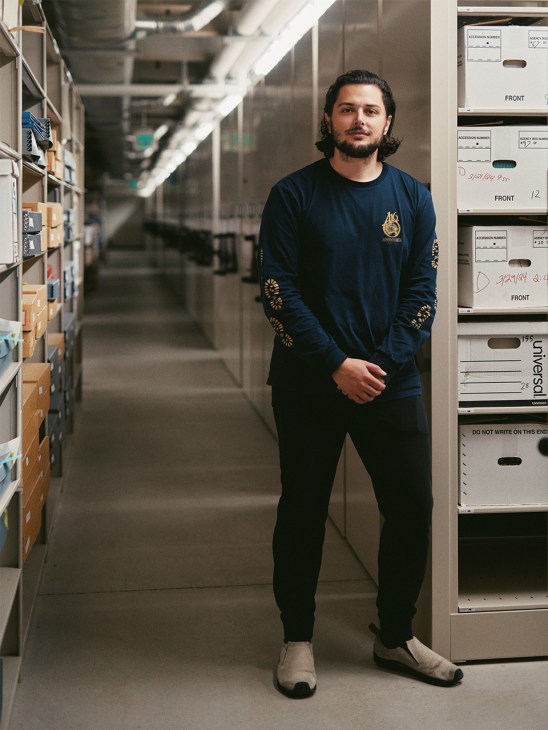
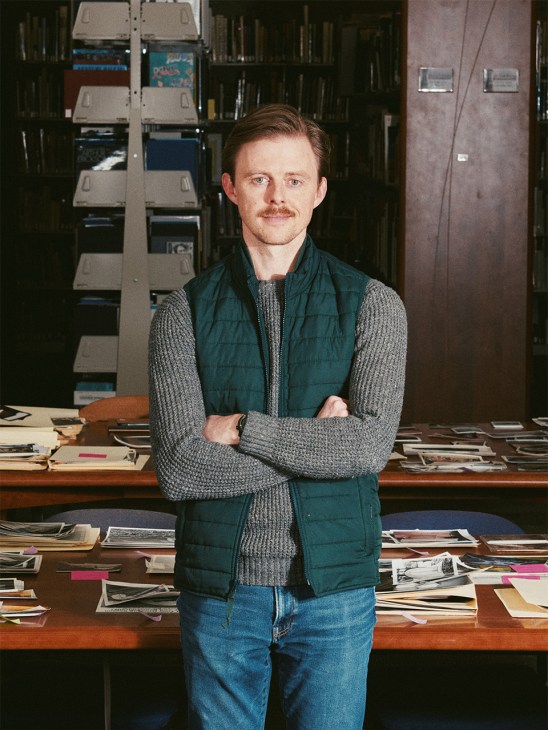
Despite this, global cachet is something to which the archive’s co-creator Chase Anderson, the industry relations manager for the outdoor design programme, is still adjusting. “When French customs ask about the purpose of our trip after we’ve flown in from Salt Lake City and our answer is Paris Fashion Week, they’re surprised,” says Anderson, referring to how his team is now invited to events where leading outdoor brands showcase their wares. “That’s not typically what an archivist says when they’re travelling.”
This resonance resulted in a busy 2025 for the team, who released a coffee-table book in June with images from 70 brands represented in the archive’s holdings. In October, it mounted exhibitions at the Westminster Menswear Archive in London and Munich’s Performance Days functional-fabrics fair, in conjunction with Shigeru Kaneko, the chief buyer of Japanese brand Beams Plus. A collector of vintage outdoor garments, Kaneko dedicated a section of his volume Outdoor Expedition Book 99 to the archive after visiting in 2021. “It’s the world’s finest outdoor resource room,” he said at the time, before inviting the archive team to Tokyo to present its work.
The archive’s growing popularity has encouraged more donations at a pivotal moment of reflection for the sector. “This industry is so focused on moving forward, newness, innovation and solving problems that it’s hard to look back,” says Anderson. “But with many of these founders ageing and companies hitting their 50th anniversaries, there’s an opportunity to ask questions such as, ‘What are the origins of this industry?’ and, ‘What made these companies successful?’”

One of the most coveted holdings at the archive covers the early days of The North Face. Founded by climbers in 1966 in San Francisco, the company was sold to Hap Klopp for $50,000 two years later. Typewritten accounting sheets reveal that the company lost money in its early days but Klopp’s business nous and the design acumen of former president Bruce Hamilton helped it to grow from a respected outdoor-equipment maker, while the new owners in the 1990s adopted youth culture to make the brand a high-street staple, with its puffer jackets becoming status symbols. Bought by VF Corporation in 2000, the brand is today valued at $3.7bn (€3.2bn).
The North Face’s chief design officer, Ebru Ercon, is a repeat visitor to the Outdoor Recreation Archive. She was recently here for the fifth time and has taken nearly 70 of her team to browse as part of an onboarding process, helping them to appreciate the challenges the brand faced in its early days. They can also read Hamilton’s letters from architect Buckminster Fuller, who vetted the company’s geodesic-shaped Oval Intention tent (1976), now held in the San Francisco Museum of Modern Art’s permanent collection. It’s a grounding experience for Ercon’s staff. “When you have Hamilton’s sketchbook in your hand, you feel differently about the brand,” she says. “You’re not being given a brief or fulfilling a task. You’re taking a baton from the past and moving forward.”

Ercon treats the archive visit as a structured exercise, asking her team members to reflect on how a certain item inspires them or to compare archival designs with current products. Her approach is similar to that of Utah State outdoor product design assistant professor Mark Larese-Casanova. Archival visits are a requirement for his students when they embark on a new design project and studying old catalogues is a fruitful form of research. Utah State students cut, knit, sew and stitch, and Larese-Casanova believes that the tangible printed matter reinforces the importance of hands-on education.
“Having the archive here as a resource helps to enable that style of learning,” he says. Students start the programme sketching on paper before they use styluses and tablets, so the archive is also valuable for overcoming any sense of inadequacy. For all their skills, lauded gear designers were fallible. “There are instances of famous designers, whose materials we have in the archive, where their drawing quality is not very good, which helps the students to overcome the fear of not being great at it,” he says. “Sketching is just about conveying ideas.”
The industry design and fashion talent that dives into the archive makes a point of visiting the classroom as well. On the day of Monocle’s visit, master knifemaker Tim Leatherman is giving a lecture; a few weeks earlier, Hap Klopp stopped by. These practitioners, in turn, are poised to make changes that will ripple throughout lookbooks, across retail displays – and on rugged peaks, with Ercon hinting that some of The North Face’s 2026 collection will draw inspiration from the archive. “There was a bolder and more courageous approach to what was happening in the past,” she says. “That’s what we’re trying to bring back.”
ora.usu.edu
From behind-the-scenes photographs and raw sketches to era-defining posters and eye-opening catalogues, the archive’s collection is a time capsule of materials that spans generations.


In the picture
Among the collection are photos that evoke a family album, capturing many outdoor brands that are now multibillion-dollar enterprises in their infancy. Founders and innovators are shown tinkering in garages or mugging for the camera after a successful outing.
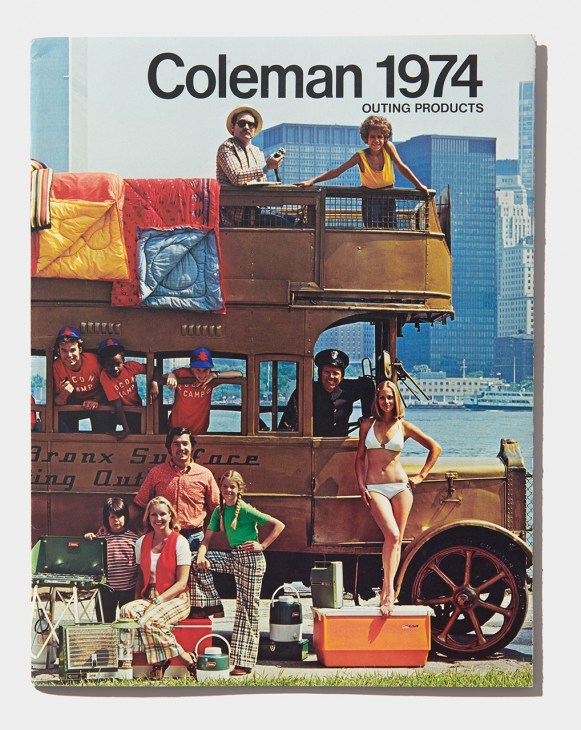
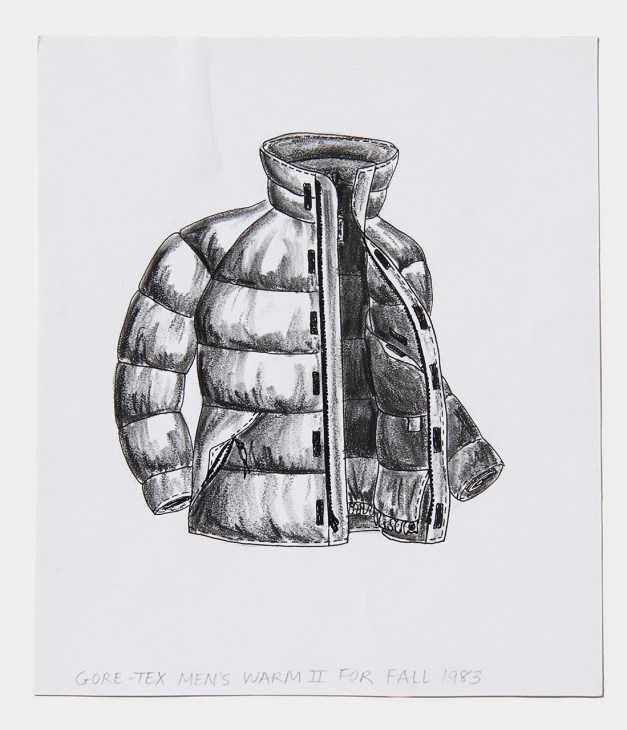
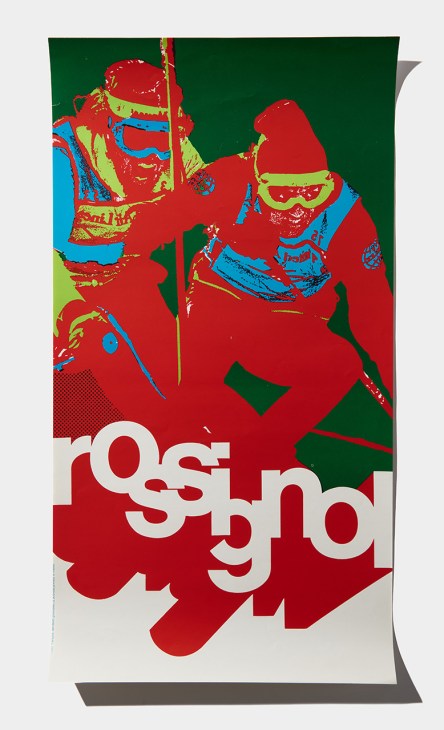
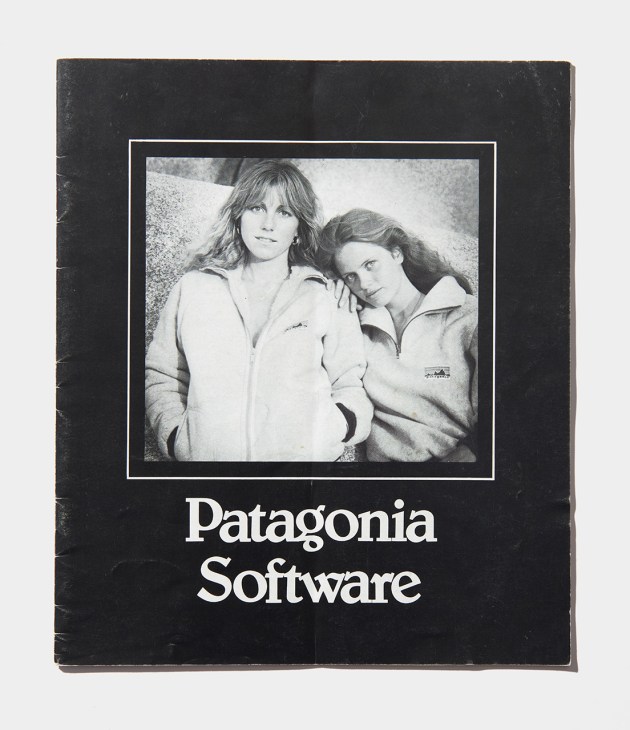


Page turners
Companies produced annual print catalogues that form a core component of the archive. How brands displayed their products, especially the outlandish and inventive approaches common in the 1970s, can come as a surprise amid today’s more cautious marketing approaches.


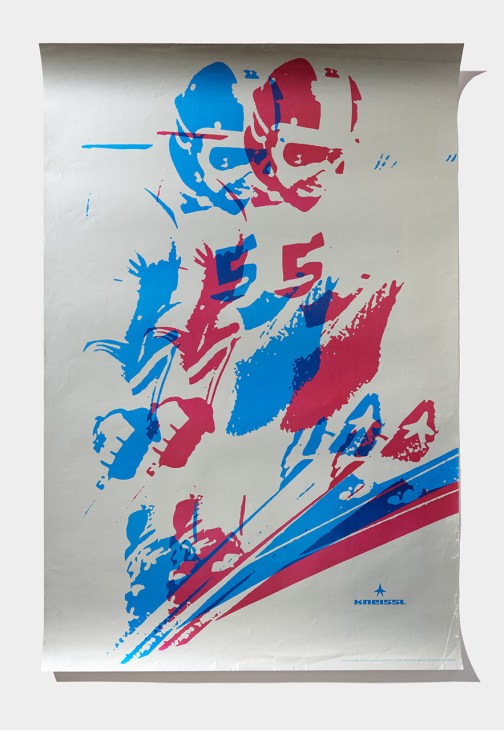
On the wall
The youthful adventurer’s bedroom or grungy gear shop was not complete without posters. Larger format than catalogues, they depict skiers and climbers in their element.

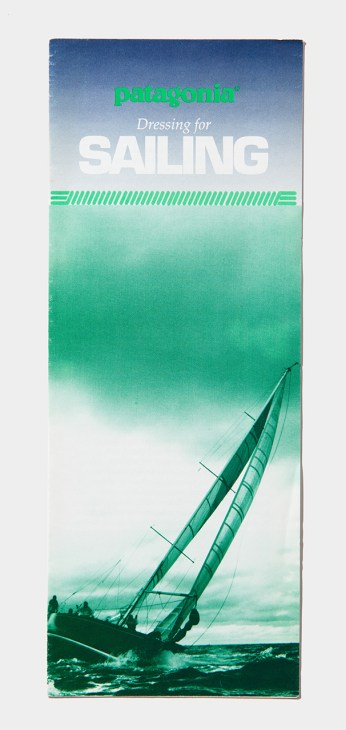
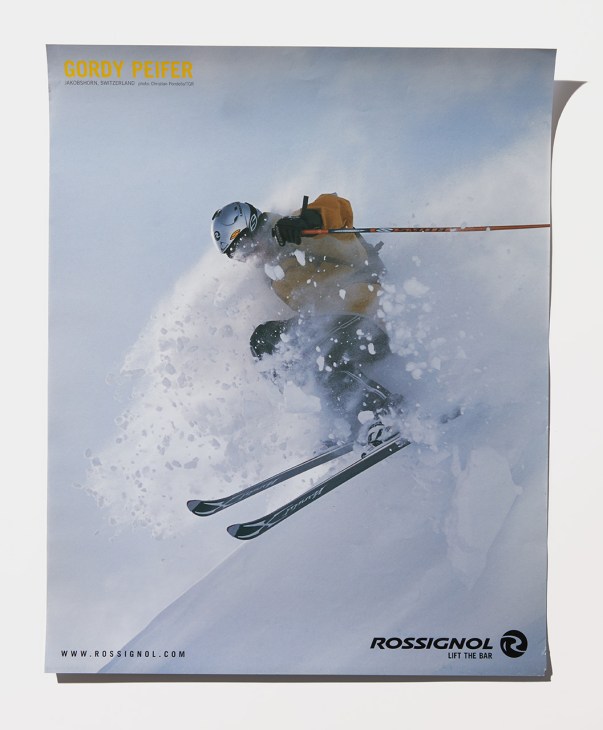
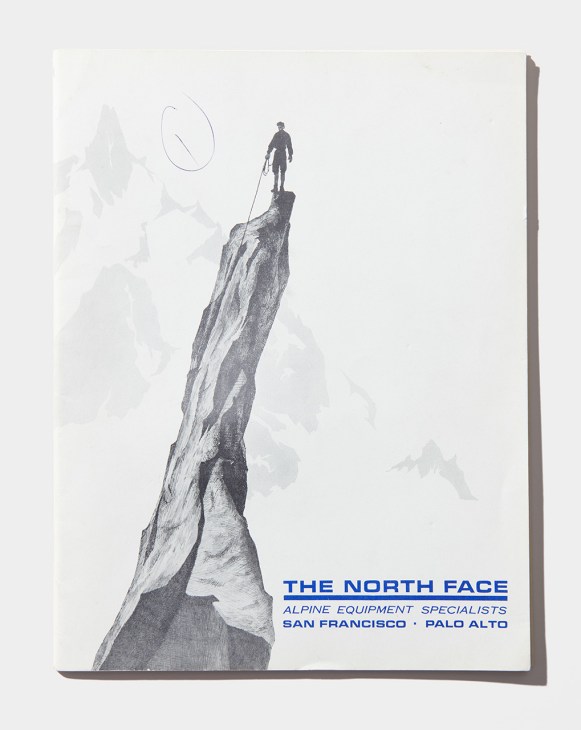
From mind to paper
The most intimate of the archive’s holdings are sketchbooks from some of the world’s top gear designers, including Bill Moss and The North Face’s Bruce Hamilton. These raw, unfiltered glimpses offer rare insights into their methods.
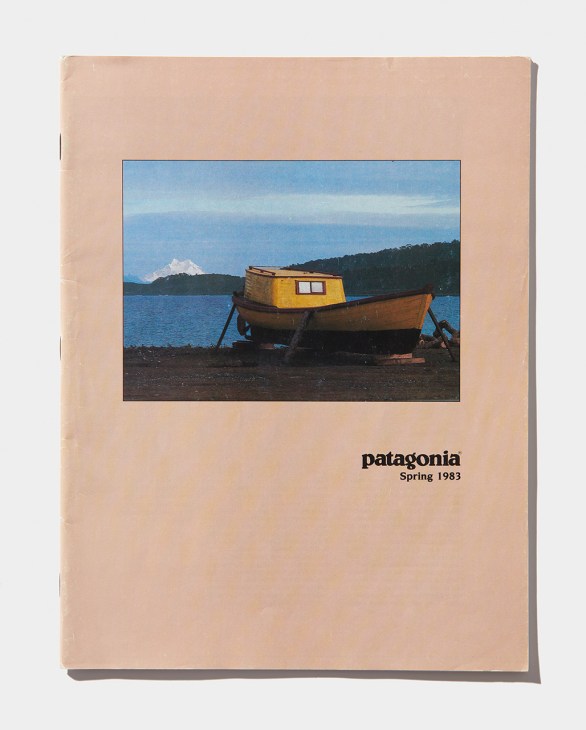
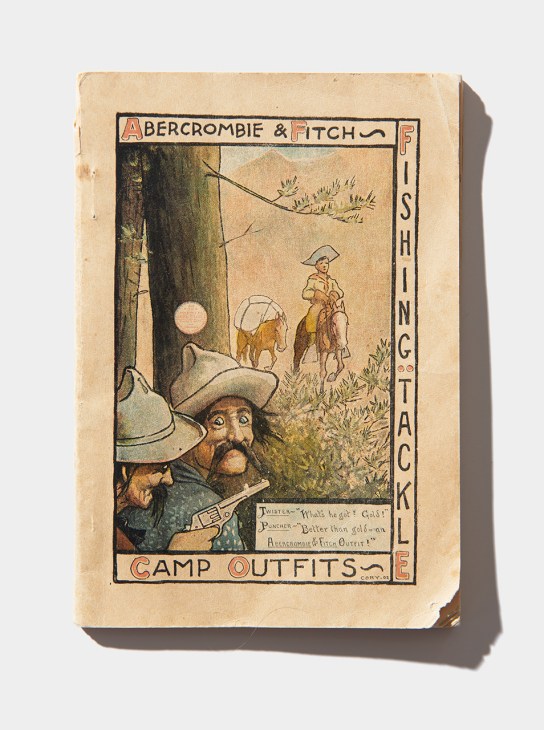

How a Swiss architecture duo transformed a dilapidated farmhouse into a light-filled, modern home on Lake Geneva
“How we ended up here is a fairy tale,” says Ueli Brauen. The co-founder of Lausanne-based practice Brauen Wälchli Architectes is referring to the home near the small village of Noville that he shares with Doris Wälchli, his partner in business and life. The fairy tale started here at the eastern tip of Lake Geneva in the early 1990s, when the couple had a client whose mother painted landscapes. “I saw one of her works featuring a little house in a field and said, ‘That home has some character,’” says Wälchli. “The woman told us that it was an actual house nearby.”

The architect duo promptly visited the property, finding a dilapidated structure in the middle of a clearing – an 18th-century stone farmhouse combining a barn, stable and living quarters. It had been abandoned for more than four decades. “We contacted the local community, who were the owners and had been leasing it out to farmers. They said that if we were interested, we could have it.” The commune owned a demolition permit for the crumbling building, which had vast cracks in its walls and damaged roof-tie beams (a previous tenant had sawn through them).
Despite this, both parties recognised the significance of the structure, a traditional Savoyard agricultural building with a square floor plan and boxy, mostly windowless façades. “It was once a common typology but now it’s very rare,” says Wälchli. “A lot of farmhouses in the region are abandoned because it’s not easy to receive permits to rezone these houses for purposes other than farming.”
The architects and commune came to an agreement whereby Wälchli and Brauen would have a free lifetime lease on the property on the condition that they rehabilitated the home. “The authorities also listed it as a historic monument, which gave us subsidies from the canton and Swiss governments.”

The successful listing ultimately funded the renovation of a structure that is now a love letter to the region. The duo, while being Swiss-German, felt themselves drawn to the French-speaking cantons in the west, first to study at the Swiss Federal Institute of Technology of Lausanne, and then by the lifestyle. “In Bern, where I’m from, we say that the people here drink too much wine and are always late – and we have adapted to that quite well,” says Brauen, laughing, before adding that the landscape is a pull too. The area around Noville is defined by the flat Rhône delta that transforms rapidly into mountains. “There’s no transition between the two landscapes. It means that when you see our home in this low clearing with steep mountains in the background, it’s like a rock, a strong form – a monument.”
The brief that the duo set themselves was to enhance this existing character. “We wanted to give this place its splendour back,” says Brauen. “So we asked the house what it could be.” Its answer? A modern take on the traditional tripartite farmhouse layout. The stable was transformed into a living space, the ground-floor hay barn was reformed as a patio enclosed with sliding glass doors with bedrooms added upstairs, while the original kitchen maintained its function but was given a contemporary overhaul. “We adapted the project to the qualities of the existing building,” says Brauen. “The living room is small and the bedroom large. Normally it’s the other way round but the house wanted the layout to be like this.”
Key structural adjustments were made. The roof was restored with beams straightened and joints repositioned, allowing the exposed structure and rafters to be retained. All the roof tiles were replaced and crumbling walls repaired using rubble found on site. Modern conveniences were added: an insulating mineral render was applied to the walls and new underfloor heating is powered by a heat pump drawing energy from the water table below. Interior elements, except for two masonry walls, were stripped out, inviting light into the open-plan home. Mezzanines functioning as a reading room and study space hover above the ground floor, which includes a double-height living room, defined by a custom four-metre-high bookcase.

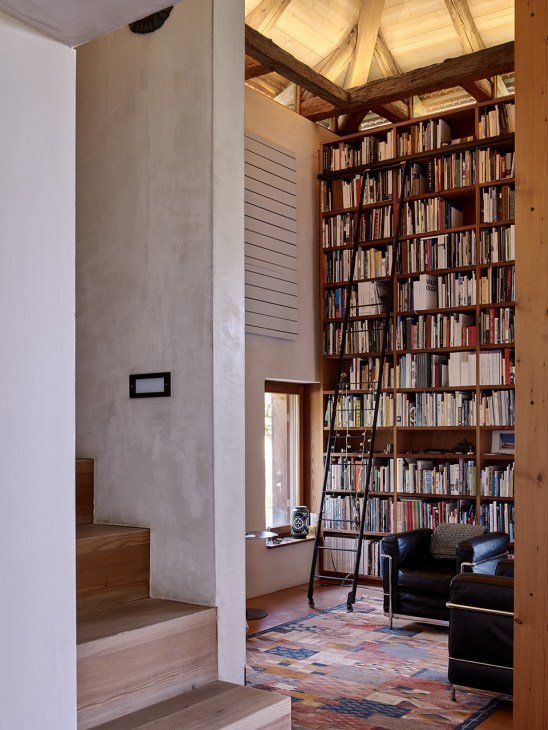

“It’s a reference to Pierre Chareau’s bookcase in Maison de Verre, the modernist glass house in Paris,” says Wälchli, who adds that the bespoke work serves a dual purpose. “The glass door for the patio can slide behind the bookcase, opening up the space.” It’s proof of a subtle efficiency now built into the house, with interventions allowing its original atmosphere to remain intact.
A case in point is the lack of windows. Three small openings were inserted in the upstairs sleeping quarters, with the local authority authorising the architects to make additional openings in the roof to bring in more light. They declined. “We said no because of the existing presence of the house,” says Wälchli. “We wanted to keep it as strong as possible.” As a result, they glazed the gaps between the roof and wall structure, which originally ventilated the barn, bringing light to the upper floor without altering the structure. A creamy Jura gravel was also laid around the house and in the patio space, reflecting additional light into the interiors.
Iconic furniture is dotted throughout the home: Le Corbusier armchairs; a small table by Pierre Chareau that sits in front of the bookcase that he inspired; bentwood dining chairs by Josef Hoffmann, a Jean Prouvé table; Eames side tables; Louis Poulsen pendant lights; and simple timber stools to the design of mid-century Swiss carpenter Jacob Müller.

All of this complements custom in-built furniture, including a long daybed sitting in a nook that can be sectioned off by sliding horizontal lamellas. “It’s a reference to the mihrabs of Arabic architecture – Ueli worked in the Middle East,” says Wälchli. “The daybed corner is perfect for coffee on winter mornings when the sun comes through the space. In summer we move out to the patio; we live in the house according to the changing seasons.”
Despite this inbuilt seasonality, the house remains visually connected to itself year-round. “Wherever you are, you can see the whole volume,” says Wälchli “When you’re in the ground-floor kitchen, you can see the top of the roof. It feels generous. There are high spaces and compressed spaces, and there are few windows, but all of the openings have views like paintings.” It’s an appropriate observation, given that a painting first drew Brauen and Wälchli here. Some 30 years on, the duo have transformed the home on that original canvas into a living work of art.
Colom: The new three-storey, multi-brand shop in Palma that’s raising the bar for retail
In the heart of Palma, the doors have just opened on a new multibrand shop for men and women – and it’s one of the braver retail ventures that the city has seen in a long time. Challenged by the impact of tourism, many old-school bakeries and shops here have closed and trinket merchants have replaced them. But in the heart of the Mallorcan capital are a trio of neighbouring businesses that cater for locals and the sort of visitors who want to return home from a city saunter with something more substantial than a fridge magnet.
These are places that are helping to raise the bar when it comes to design, service and the commitment to doing retail well. Monge is a purveyor of Mallorca-made shoes; Relojería Alemana is a luxury watch and jewellery shop; they are now joined by the three-storey Colom, which takes its name from the street where they all sit, Carrer de Colom.

Colom was created by Suso Ramos – the co-founder of another fashion shop in the city, La Principal – his partner in life and work, Liticia Cerqueira, and Pablo Fuster, whose family owns the watch store. “We had been talking about opening a womenswear shop for many years – somewhere with the space to show brands,” says Cerqueira. “Suso and Pablo had lunch one day and Pablo mentioned this vacant property. Suso suggested a pop-up but Pablo said, ‘Let’s do a store.’”
Instead of just offering upscale womenswear, they decided to bring in menswear, luggage and fragrance across the 750 sq m space. To re-engineer the building, the team called on De Prada Arquitectura, whose founder, Carlos de Prada, had designed a house for Ramos and Cerqueira. Here, he inserted a black timber staircase that unites the three floors, employed local furniture-makers (Resmes) and lighting producers (Contain), and commissioned vitrines and benches from island carpenters.




The outcome is a tranquil backdrop to the collections on display. “The architecture cannot eclipse the clothing; it works like a gallery, a space where you can show the clothes,” says De Prada. He stresses that the final design was the product of a close partnership with his clients, who were keen to treat materials with respect and eliminate the use of chemical-heavy paints. “I love this profession, this island, but you need the right clients to help protect it.”

The shop’s spacious, elegant design is important for more than simply customer experience. “At La Principal, we don’t have enough space so we focus on casualwear. But here we can attract more elevated brands and give them the space to be shown well,” says Cerqueira, who is from Paris and has worked for Veja, Maison Margiela and Maison Kitsuné. In addition to Officine Générale, Barena Venezia and By Malene Birger, the shop also sells the Mews Clothing line, founded by La Principal.



Though in its infancy, Colom is already finding an audience, many of whom have a base on the island. “People are coming in and saying, ‘We really needed this,’” says Cerqueira. She is clear, however, that there’s lots of work ahead as they develop a store that’s short on pretension and high on design – a place that shows what the city could be like with fewer trinket shops.
Carrer de Colom 9, Palma


